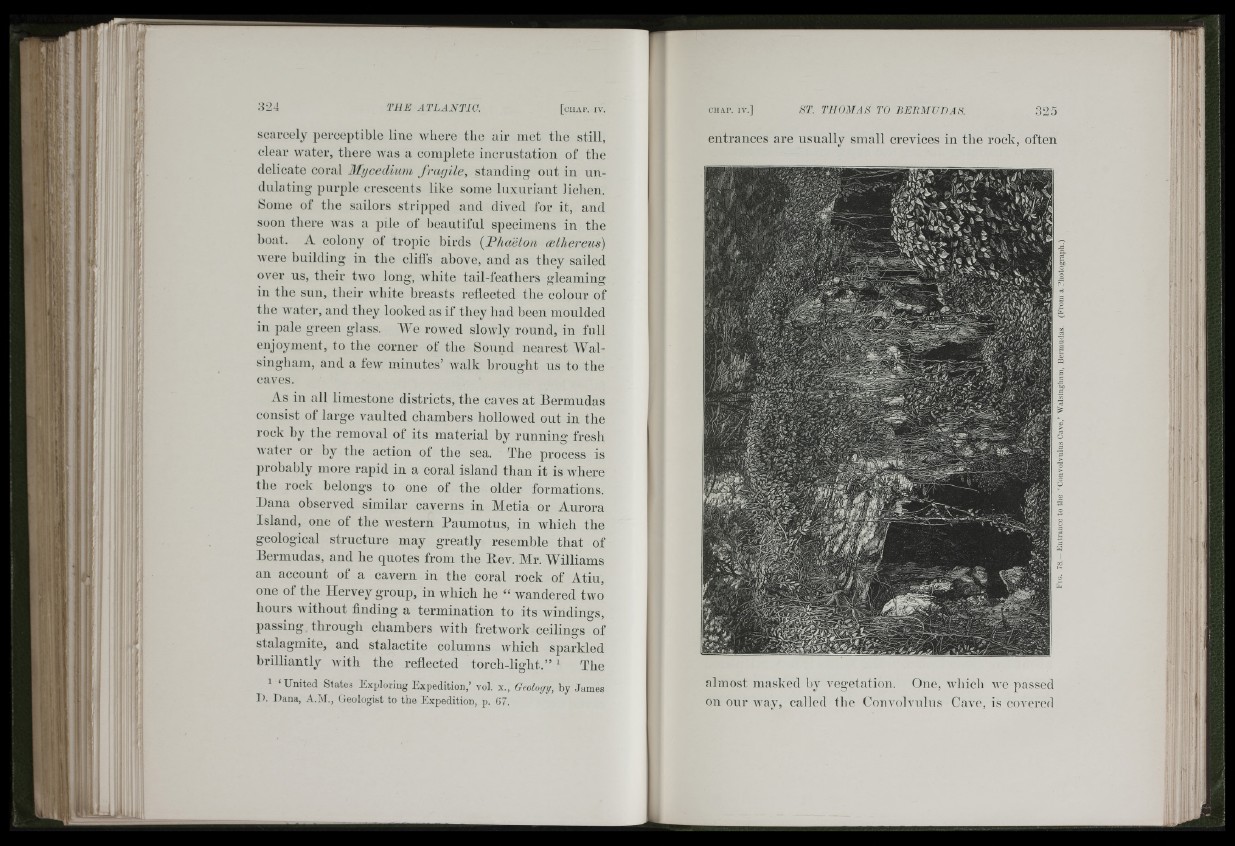
ll . pi
324
scarcely perceptible line wliere the air met the still,
clear water, there was a complete incrustation of the
delicate coral Mycediiun, fragile, standing out in undulating
purple crescents like some luxuriant Jielieu.
Some of tiie sailors stripped and dived tor it, and
soon tliere was a pile of lieautitul specimens in the
lioat. A colony ot tropic birds {jPhaelon celhereus)
were building in tlie cliifs ahove, and as tliey sailed
over us, their two long, Avhite tail-feathers gleaming
in the siin, tlieir white breasts reflected the colour of
the Avater, and they looked as if they liad been moulded
in pale green glass. We roAved slowly round, in full
enjoyment, to the corner of the Sound nearest Wal-
singhani, and a few minutes’ Avalk brought us to the
caves.
As ill all limestone districts, the caves at Bermudas
consist of large vaulted chamhers hollowed out in the
rock hy the removal of its material hy running fresh
A'ater or by the action ot the sea. The process is
jirobahly more rapid in a coral island than it is where
the rock belongs to one of the older formations.
Dana observed similar caverns in Aletia or Aurora
Island, one of the Avestern Paumotus, in which the
geological structure may greatly resemble that of
Bermudas, and he quotes from the Ilev. Mr. Williams
an account of a cavern in the coral rock of Atiu,
one of the Ilervey group, in which he “ wandered two
hours Avithout finding a termination to its Avindings,
passing through chambers Avith fretAvork ceilings of
stalagmite, and stalactite columns Avhich sparkled
brilliantly Avith the reflected torch-light.” ^ The
1 ‘ United States Exploring Expedition,’ vol. x., Geology, b j James
]). Dana, A.tef., (.ieologist to the Expedition, p. 67.
entrances are usually small crevices in the rock, often
almost ma sked liy vegetation. One, Avliich Ave passed
on our Avay, called tlie Convolvnlns Cave, is covered